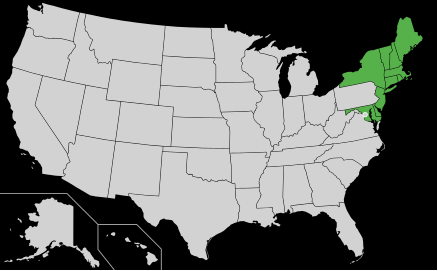Exxon's Funding of Climate Denial Turned Americans Against Their Own Government for Profit
October 31, 2015Fossil Fuel Companies Risk Plague of Lawsuits
November 5, 2015By Hannah McKinnon, Oil Change International, October 27, 2015
Download the full report: “Lockdown: The End of Growth in the Tar Sands”
Download the executive summary of the report
Just a few days ago, Hurricane Patricia became the strongest hurricane ever measured as it made landfall on the western coast of Mexico. It hit as we approach the end of another year that is expected to break last year’s record as the hottest year of recorded temperatures.
Climate change is here and now. And if world leaders had heeded scientific warnings 30 years ago, 20 years ago, 10 years ago, or even as recently as the Copenhagen climate conference in 2009 – it’s possible we would be well on our way to securing the decarbonized future that the world desperately needs.
Unfortunately that is not how the story goes. Instead, world leaders have pandered and caved to the powerful fossil fuel lobby: rubber stamping massive carbon-intensive infrastructure, unlocking billions of tonnes of new carbon in hard-to-reach places like the deep offshore ocean, the arctic, or hard-to-extract resources like tar sands, and proceeded to design energy policy around scenarios incompatible with a safe global climate.
It was naïve of them to think they would get away with it. A problem so urgent, so catastrophic, and so avoidable could not go ignored for long.
It has been in this leadership vacuum that people have stepped up. Concerned citizens; be they grandparents, scientists, First Nations, business people, activists, civil servants, or students, a movement is growing that is not only demanding the safe, clean, and just energy future the world needs, but is building it.
In a new report that we released today along with our friends at Bold Nebraska, Environmental Defence Canada, Equiterre, IEEFA, NRDC, Sierra Club U.S., and 350.org, we take a data-driven look at the role this incredible and diverse movement is having keeping some of the world’s dirtiest oil – the Alberta tar sands – in the ground.
The report, Lockdown: The end of growth in the tar sands, is all about the numbers. We built a model (the first of its kind in the public sphere) that looks at the entire North American tar sands pipeline system. Using this model (INAP – the Integrated North American Pipeline model), we were able to determine bottlenecks, hurdles, and pressure points for the industry.
One story the model tells is a simple one: without major new pipelines, the tar sands have run out of room to grow. And at the moment every single major pipeline (as well as incremental expansions to existing pipelines) is facing mounting public, legal, and political opposition – all of which has been driven by people power that refuses to accept the devastating impacts of the Alberta tar sands on the climate, the environment, human rights, and communities.
INAP finds that:
- The current tar sands pipeline system is 89% full; and
- The industry will run out of transportation capacity as soon as 2017 without major new pipelines, or significant expansion to existing systems.
We then assessed the impacts of these pipelines constraints on the tar sands sector and found:
- Further growth in the sector is unlikely to be viable without major pipeline expansion;
- Transporting tar sands by rail is too expensive to justify major new growth; and
- The emissions savings of this no new growth reality would be 34.6 gigatons of CO2
In other words – by slowing, delaying, and stopping pipelines, concerned citizens are poised to keep an incredible amount of carbon in the ground (equivalent to shutting down 227 coal plants operating for 40 years). This is an enormous step towards a safer climate future for the world – and much closer to Canada’s fair share in addressing the global climate crisis.
With the Paris climate negotiations around the corner, a new Canadian government that has promised climate action, and a U.S. President on the brink of putting the nail in the coffin of another major tar sands pipeline (Keystone XL) – this report is a clear, precise, and hopeful reminder that the door is still open to prevent the worst.
New pipelines would mean massive tar sands expansion that is incompatible with a safe global climate. Any government serious about climate change must confront the scientific reality that there is no room for major new fossil fuel infrastructure that locks in production and expansion. The conversation must now be about keeping carbon in the ground. Period.
This report is validation that people power is working – it is stepping in where governments are falling short. And in the case of the Alberta tar sands – it has created circumstances where no new growth will be profitable in the sector unless they can overcome growing a movement that starts on the front lines with First Nations and impacted communities, and extends across the country, the continent, and the world.
A safer climate is within reach and we cannot wait for decision makers to come to terms with the scale of the challenge – we must continue to build circumstances where clean, safe, and renewable energy replaces last century’s fossil fuels. We must create the conditions where this transition is a just one where workers can move from carbon-intensive energy production to a decarbonized technology workforce. And we must ensure that everything we continue to do is done as allies to those on the front lines of both climate change and carbon-intensive industries.
Our impact has never been greater and it just keeps on growing. We hope the story that these numbers tell not only builds momentum for a people-powered safe climate future, but inspires political leaders to face the crux of the tar sands head on: tar sands expansion has no place in a climate safe world.



